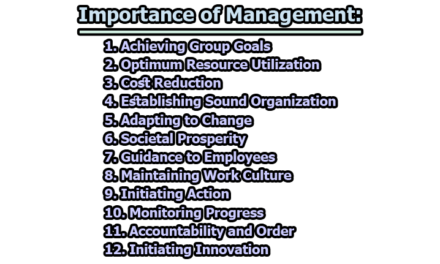Public-Private Partnerships in Achieving Competitiveness:
Public-Private Partnerships (PPPs) play a crucial role in achieving competitiveness in various sectors of the economy. These collaborations involve a partnership between government entities and private sector organizations to jointly plan, finance, develop, and manage projects or services. The aim is to leverage the strengths of both sectors to drive economic growth, infrastructure development, and service delivery in a more efficient and cost-effective manner. Here, we will explore Public-Private Partnerships in achieving competitiveness.
1. Infrastructure Development:
a) Transportation: PPPs are instrumental in the development of transportation infrastructure. For example, when a government collaborates with private entities to build and maintain highways or public transportation systems, several benefits emerge:
- Efficiency: Private sector involvement often leads to efficient project management and construction techniques, resulting in faster completion and reduced costs.
- Improved Connectivity: Better road networks and public transport systems enhance connectivity between regions, making it easier for businesses to move goods and people, ultimately reducing transportation costs.
- Logistics and Supply Chain Improvements: Enhanced transportation infrastructure can significantly reduce logistics costs for businesses, making them more competitive in local and international markets.
b) Energy: In the energy sector, PPPs can contribute to competitiveness in various ways:
- Increased Energy Generation: Collaboration between public and private entities can lead to the development of new power generation projects, ensuring a stable and sufficient energy supply. This reliability is essential for industries that depend on a continuous energy source.
- Diversification of Energy Sources: PPPs can encourage the development of renewable energy sources, reducing dependency on fossil fuels. This not only benefits the environment but also helps businesses manage energy costs.
- Cost Efficiency: Private sector involvement can result in more cost-efficient power generation and distribution, translating to lower energy costs for businesses and consumers.
c) Telecommunications: PPPs in the telecom sector can foster competitiveness in several ways:
- Widespread Access to Technology: Collaborations in this sector can lead to the expansion of high-speed internet and mobile networks, ensuring that businesses and individuals have access to the latest digital technologies. This is crucial for remaining competitive in the global marketplace.
- Innovation and Productivity: Access to advanced communication technologies enables businesses to innovate, communicate efficiently, and enhance productivity, which is key to competitiveness.
- Market Competition: Private sector participation can introduce competition, driving service quality up and costs down, which benefits both consumers and businesses.
2. Education and Workforce Development:
PPPs in education and workforce development are essential for enhancing the competitiveness of a region:
a) Customized Workforce Development: Public-private partnerships can help tailor education and training programs to meet the specific needs of industries, ensuring that the local workforce is skilled and adaptable to technological advancements.
b) Employability: These partnerships can bridge the gap between education and employment, ensuring that graduates are equipped with the skills and knowledge required by the job market. This results in a more employable and competitive workforce.
c) Economic Growth: A well-trained and competitive workforce attracts businesses to the region, leading to job creation and economic growth.
3. Healthcare Services:
PPPs in healthcare can have a significant impact on competitiveness:
a) Healthier Workforce: Collaborations in healthcare can lead to the development of modern healthcare facilities, efficient services, and advanced medical technologies. This results in a healthier and more productive workforce, which is essential for business competitiveness.
b) Reduced Public Health Burden: High-quality healthcare services provided through PPPs can reduce the burden on the public healthcare system, ensuring that public resources are allocated efficiently, which contributes to overall competitiveness.
c) Medical Tourism: Competitive healthcare services can attract medical tourists, contributing to the local economy and improving the competitiveness of the healthcare sector.
4. Innovation and Technology:
Public-private partnerships can be instrumental in fostering innovation and technological advancement:
a) Research and Development: Collaboration in technology parks, innovation hubs, and research institutions can lead to breakthroughs in various industries, helping to create new products, services, and industries, thus enhancing overall competitiveness.
b) Economic Growth: Technological innovation often translates into economic growth. New industries and businesses that emerge from these partnerships can drive local and national competitiveness.
c) Knowledge Sharing: These collaborations encourage the sharing of knowledge and expertise between the public and private sectors, fostering a culture of innovation and problem-solving.
5. Environmental Sustainability:
PPPs in environmental initiatives are vital for sustainability and competitiveness:
a) Clean Energy: Projects in renewable energy and clean technology can reduce energy costs for businesses while mitigating the environmental impact. This is not only eco-friendly but also cost-effective and contributes to competitiveness.
b) Waste Management: Efficient waste management solutions developed through PPPs reduce environmental pollution and lower disposal costs for businesses, improving competitiveness.
c) Water Resource Management: Collaborations in water resource management ensure a sustainable and reliable water supply, which is essential for industries, agriculture, and overall regional competitiveness.
6. Regulatory Reforms:
Public-private partnerships can also play a crucial role in regulatory reforms, which are essential for creating a business-friendly environment and enhancing competitiveness:
a) Streamlined Procedures: Collaboration between the public and private sectors can lead to the simplification and streamlining of bureaucratic procedures. This reduces red tape and administrative burdens on businesses, making it easier to operate and invest in the region.
b) Transparency and Accountability: PPPs can promote greater transparency and accountability in regulatory processes, reducing corruption and ensuring a level playing field for businesses.
c) Improved Business Climate: Regulatory reforms initiated through PPPs can lead to a more predictable and favorable business climate, attracting domestic and foreign investments, which ultimately boosts competitiveness.
7. Risk Sharing:
Public-private partnerships offer an effective mechanism for sharing risks, which is particularly important in large-scale projects:
a) Private Sector Expertise: Private sector partners often bring valuable expertise in risk management and project execution. This expertise minimizes the chances of project delays or cost overruns.
b) Reduced Fiscal Burden: By sharing risks, governments can reduce their financial burden. If a project encounters unexpected challenges, the financial impact is not borne solely by the public sector.
c) Timely Project Delivery: Risk-sharing arrangements often incentivize private partners to complete projects on time and within budget, which is critical for competitiveness as delays can have significant economic implications.
8. Financing and Investment:
Private sector financing is instrumental in funding large-scale projects that governments may not be able to undertake alone:
a) Capital Injection: Private investors provide capital for infrastructure and development projects, reducing the need for governments to allocate a significant portion of their budgets. This allows governments to allocate public funds more efficiently and effectively.
b) Financial Innovation: Private sector financing can introduce financial innovation in project funding, such as build-operate-transfer (BOT) models, which can spread the financial risk and promote competitiveness.
c) Economic Growth: The initiation of major projects through private financing leads to economic growth, job creation, and increased competitiveness in the region.
9. Performance-Based Contracts:
Many PPPs include performance-based contracts that incentivize private partners to maintain high operational standards and cost-efficiency:
a) Quality Service Delivery: Performance-based contracts encourage private partners to deliver high-quality services or infrastructure. This is vital for competitiveness as it ensures that the end-users receive value for money.
b) Efficient Resource Allocation: Private partners are motivated to allocate resources efficiently to meet performance targets, which often results in cost savings for the public sector and ultimately benefits businesses and consumers.
c) Long-Term Sustainability: These contracts promote the long-term sustainability of infrastructure and services, ensuring they remain competitive and effective over time.
10. Economic Growth and Job Creation:
Public-private partnerships are known for their ability to stimulate economic growth and create jobs, both of which are central to enhancing competitiveness:
a) Job Creation: The development of PPP projects generates jobs in various sectors, from construction and operations to support services, directly benefiting the local workforce and boosting competitiveness.
b) Economic Expansion: The infusion of investments through PPPs spurs economic expansion, attracting businesses and industries to the region. This, in turn, leads to increased competition and competitiveness.
c) Increased Tax Revenue: The economic growth resulting from PPP projects leads to higher tax revenues, which can be reinvested in further development and infrastructure improvements, creating a cycle of competitiveness enhancement.
In conclusion, public-private partnerships are powerful tools for achieving competitiveness by leveraging the expertise, resources, and innovation of both the public and private sectors. When implemented effectively, these partnerships can lead to improved infrastructure, a skilled workforce, innovation, and sustainable development, ultimately enhancing the economic competitiveness of a region or nation.
References:
- Burnet, M. (2005). Beyond the new Public Procurement Directive – The future for Public Private Partnerships (PPP). EIPASCCOPE, Vol. 3, 21-25.
- Commission of the European Communities. (2004). Green Paper on Public-private partnerships and community law on public contracts and concessions, COM (2004) 327 final. Brussels. April 30, 2004.
- Gregurek, M. (2001). Stupanj i učinci privatizacije u Hrvatskoj. Ekonomski pregled, 52. Zagreb.
- Gulija, B. (2004). Javno-privatno partnerstvo. Bilten Europskog dokumentacijskog centra: Euroscope, Vol.73/13, Supplement I-IV.
- Uvalic, M., & Vaughan-Whitwhead, D. (1997). Privatization Surprises in Transition Economies. Edward Elgar, Cheltenham.

Assistant Teacher at Zinzira Pir Mohammad Pilot School and College










